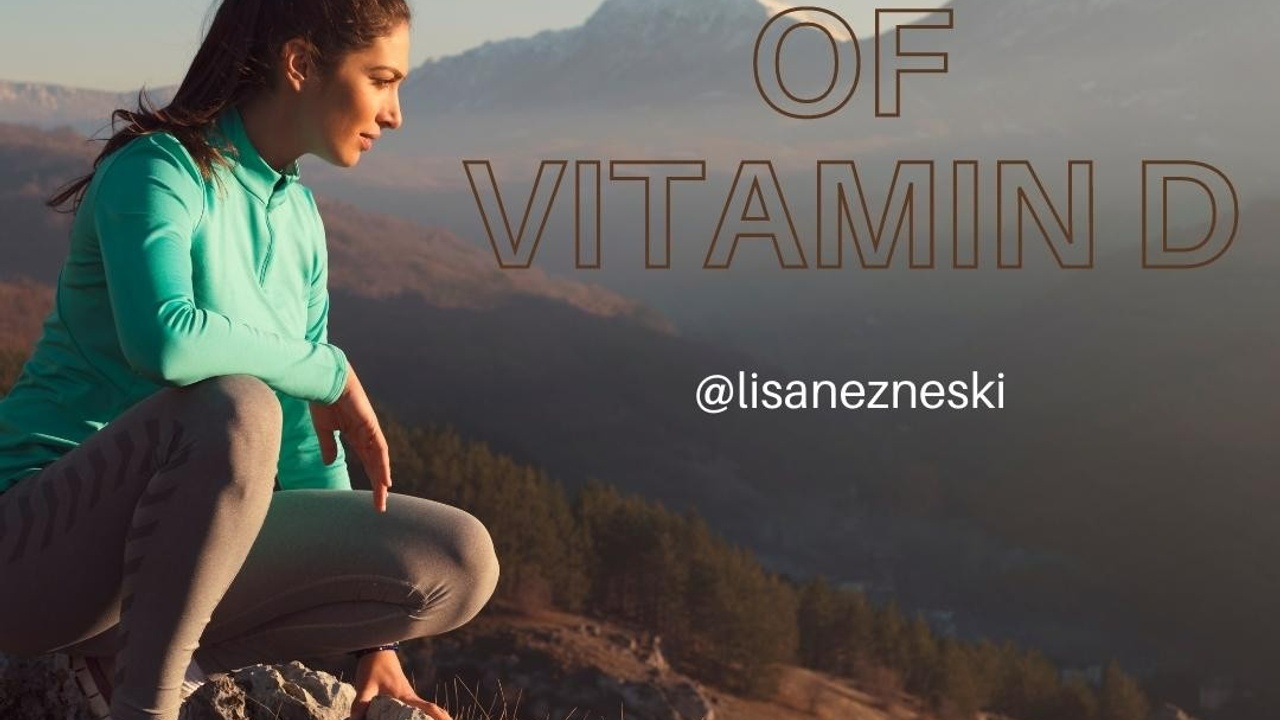Why take Vitamin D Despite Living in the Sunshine State? Everyone Needs It!

Vitamin D LOW! 😱
When my Vitamin D level results showed that I was borderline low normal, I was shocked! I get a lot of unintentional sun just by living in the Sunshine State. And that's one of the reasons, I moved here.
But in 2019, I had a little spot on my nose that would not heal. The dermatologist removed a skin cancer from my nose and from my upper back. [All those summers as a kid at the Portage pool, in the time before sunscreen. And yes baby oil with iodine was quite popular.]
So the folly of my youth caught up with me, and now I am careful to use an SPF of at least 30, and usually 50. So yay sunscreen, oh no low Vitamin D. It can happen.
Why I am concerned 🤔
Low Vitamin D can lead to:
- Osteoporosis (every woman of a certain age should be concerned)
- Cancer (who knew- especially GI cancers)
- Depression (is it low sunlight or low Vitamin D?)
- Susceptibility to viral illnesses like COVID
- Death (honestly no one should die from lack of Vitamin D)
Foods that contain Vitamin D 🐟🍳
- Cod liver oil
- Salmon
- Tuna
- Egg Yolks
- Sardines
- Beef Liver
- Swordfish
Even though these foods are rich in Vitamin D, it's really hard to get enough from food alone.
Sunlight is the alternative ☀️
First, what is the association between Vitamin D and the sun, and how much time in the sun is safe?
Vitamin D is made from cholesterol, which I have in abundance apparently (from those same lab tests). When the sun's UVB rays hit the skin, it converts cholesterol to Vitamin D. If you sit near a window and are exposed to natural light, guess what? UVB rays cannot penetrate glass, so you are at risk, too.
There are at least two studies done in northern latitude countries like the UK and Norway, where sun exposure outdoors at noon from 15-30 minutes is effective in boosting your Vitamin D.
I hear the gasp 😲from the sunscreen crowd — Lisa you can't mean noon. Well, that is what the studies show for Vitamin D health, and like everything in life, there are trade-offs. If you want to avoid the sun when it is at its zenith for skin cancer prevention, I get it. Believe me, I get it.
So spend some time in the sun with your skin exposed—how much time and when is entirely up to you.
The best dose of Vitamin D
So unless you are eating a lot of sardines (probably not) and sitting in the sun every day at noon (also doubtful), we all need a Vitamin D supplement.
The recommended daily allowance of Vitamin D for ages 1 to 70 is 600 International Units (IUs). Below 12 months is 400 IUs, and above 70 years of age is 800 IUs.
Vitamin D is a fat-soluble vitamin, which means it hangs around in the body long after you take it, unlike the B Vitamins that make all the "expensive urine" I keep hearing about. (Why do I feel so much more energized after B's?—that's for another day). So be careful to replenish slowly, and look at all the ingredients that you are taking because the vitamin industry makes multi's that add a little of this and a little of that, and before you know it you are exceeding the recommended dose. Don't do that.
Do get your blood level checked as I did, so you know.
Helping you find the best Vitamin D product for you
There are a ton of Vitamin providers in the marketplace, and the quality can range from awful to flat-out dangerous.
If you would like help finding the best Vitamin D product for you, sign up for a free no-obligation 15-minute consultation with me here: Click here to schedule your free 15-minute consultation
Stay connected with news and updates!
Join our mailing list to receive the latest news and updates from our team. Your information will not be shared.



